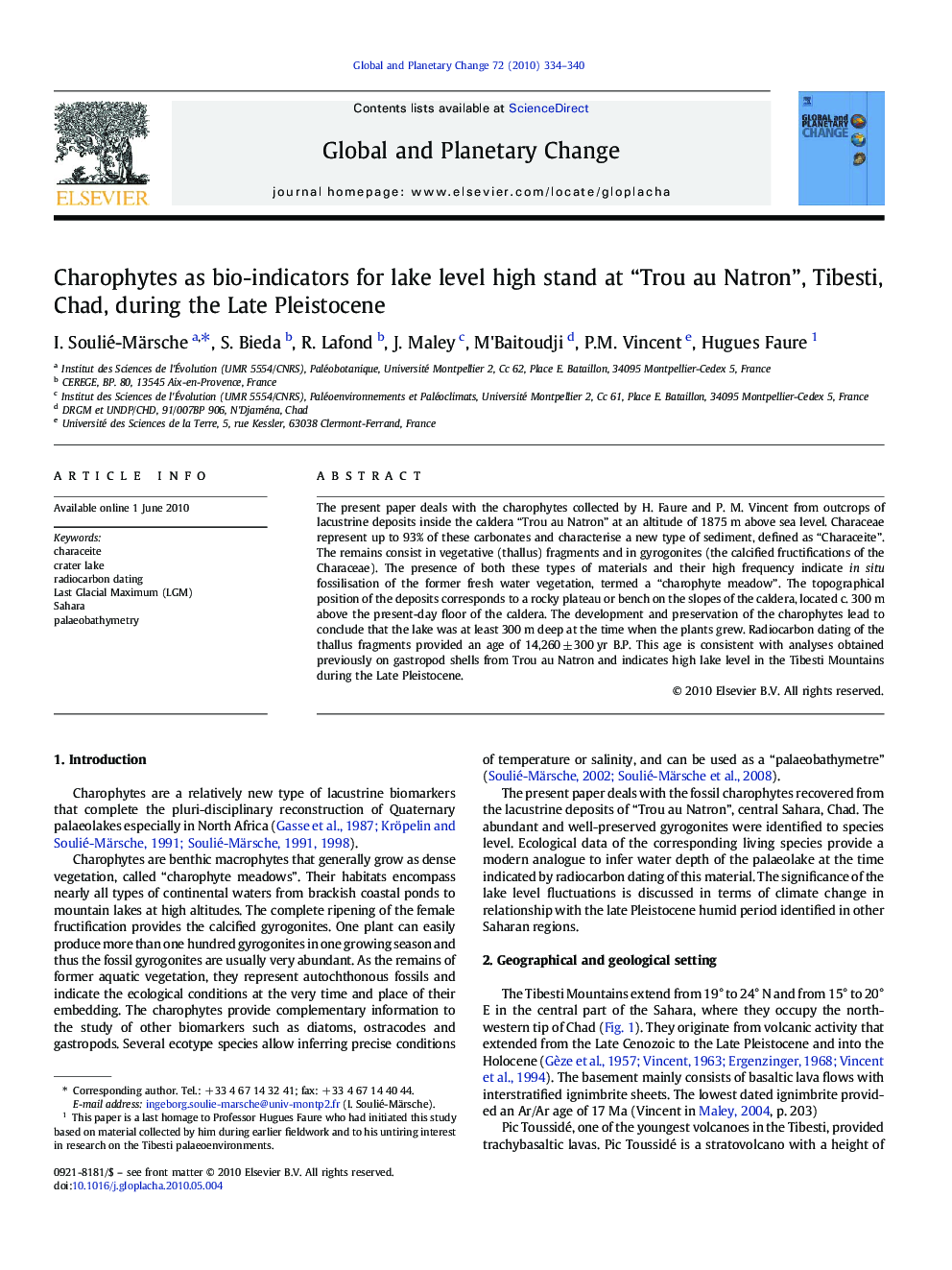| Article ID | Journal | Published Year | Pages | File Type |
|---|---|---|---|---|
| 4463922 | Global and Planetary Change | 2010 | 7 Pages |
The present paper deals with the charophytes collected by H. Faure and P. M. Vincent from outcrops of lacustrine deposits inside the caldera “Trou au Natron” at an altitude of 1875 m above sea level. Characeae represent up to 93% of these carbonates and characterise a new type of sediment, defined as “Characeite”. The remains consist in vegetative (thallus) fragments and in gyrogonites (the calcified fructifications of the Characeae). The presence of both these types of materials and their high frequency indicate in situ fossilisation of the former fresh water vegetation, termed a “charophyte meadow”. The topographical position of the deposits corresponds to a rocky plateau or bench on the slopes of the caldera, located c. 300 m above the present-day floor of the caldera. The development and preservation of the charophytes lead to conclude that the lake was at least 300 m deep at the time when the plants grew. Radiocarbon dating of the thallus fragments provided an age of 14,260 ± 300 yr B.P. This age is consistent with analyses obtained previously on gastropod shells from Trou au Natron and indicates high lake level in the Tibesti Mountains during the Late Pleistocene.
